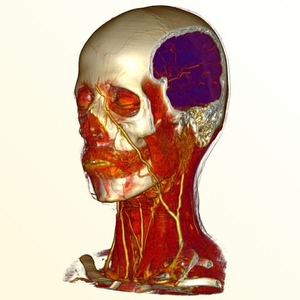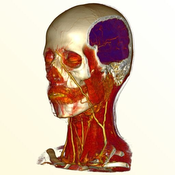Information
- Publication Type: Conference Paper
- Workgroup(s)/Project(s):
- Date: October 2004
- ISBN: 0-7803-8781-3
- Editor: D. Silver, T. Ertl, C. Silva
- Booktitle: Proceedings IEEE/SIGGRAPH Symposium on Volume Visualization and Graphics
- Pages: 1 – 8
- Keywords: Three-Dimensional Graphics and Realism,
Abstract
Most CPU-based volume raycasting approaches achieve high performance by advanced memory layouts, space subdivision, and excessive pre-computing. Such approaches typically need an enormous amount of memory. They are limited to sizes which do not satisfy the medical data used in daily clinical routine. We present a new volume raycasting approach based on image-ordered raycasting with object-ordered processing, which is able to perform high-quality rendering of very large medical data in real-time on commodity computers. For large medical data such as computed tomographic (CT) angiography run-offs (512x512x1202) we achieve rendering times up to 2.5 fps on a commodity notebook. We achieve this by introducing a memory efficient acceleration technique for on-the-fly gradient estimation and a memory efficient hybrid removal and skipping technique of transparent regions. We employ quantized binary histograms, granular resolution octrees, and a cell invisibility cache. These acceleration structures require just a small extra storage of approximately 10%.Additional Files and Images
Weblinks
No further information available.BibTeX
@inproceedings{grimm-2004-memory,
title = "Memory Efficient Acceleration Structures and Techniques for
CPU-based Volume Raycasting of Large Data",
author = "S\"{o}ren Grimm and Stefan Bruckner and Armin Kanitsar and
Eduard Gr\"{o}ller",
year = "2004",
abstract = "Most CPU-based volume raycasting approaches achieve high
performance by advanced memory layouts, space subdivision,
and excessive pre-computing. Such approaches typically need
an enormous amount of memory. They are limited to sizes
which do not satisfy the medical data used in daily clinical
routine. We present a new volume raycasting approach based
on image-ordered raycasting with object-ordered processing,
which is able to perform high-quality rendering of very
large medical data in real-time on commodity computers. For
large medical data such as computed tomographic (CT)
angiography run-offs (512x512x1202) we achieve rendering
times up to 2.5 fps on a commodity notebook. We achieve this
by introducing a memory efficient acceleration technique for
on-the-fly gradient estimation and a memory efficient hybrid
removal and skipping technique of transparent regions. We
employ quantized binary histograms, granular resolution
octrees, and a cell invisibility cache. These acceleration
structures require just a small extra storage of
approximately 10%. ",
month = oct,
isbn = "0-7803-8781-3",
editor = "D. Silver, T. Ertl, C. Silva",
booktitle = "Proceedings IEEE/SIGGRAPH Symposium on Volume Visualization
and Graphics",
pages = "1--8",
keywords = "Three-Dimensional Graphics and Realism,",
URL = "https://www.cg.tuwien.ac.at/research/publications/2004/grimm-2004-memory/",
}


 Paper
Paper
